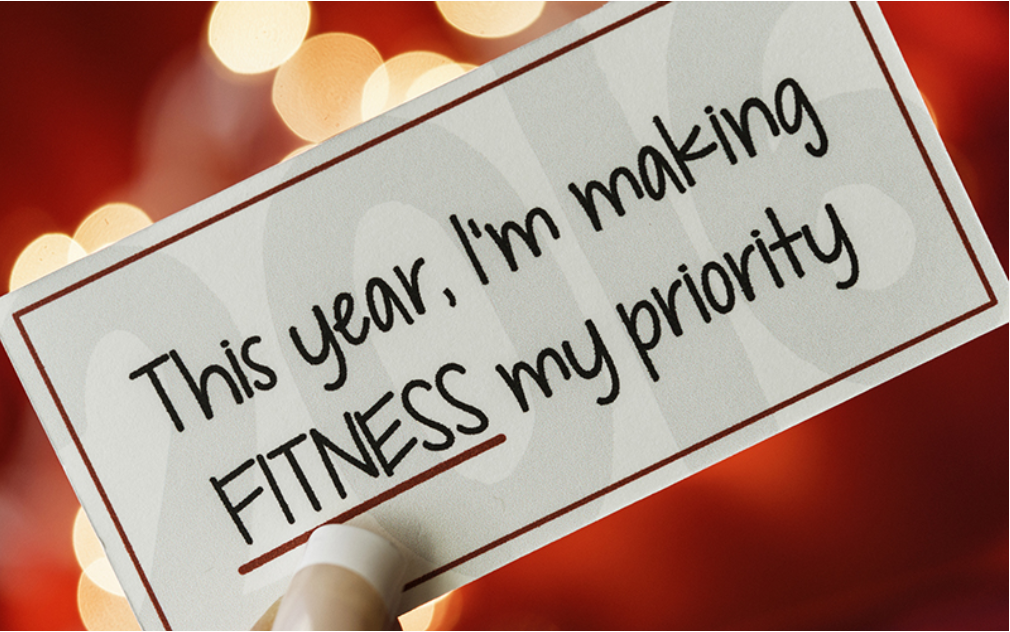Many people enter 2024 trying to become fitter; however, many find sticking to their New Year’s Resolutions challenging. A Forbes article estimates that the average fitness new year resolution lasts 3.74 months. While this may seem discouraging, there are many ways to maximize your chances of fulfilling your fitness resolution. The three main elements to focus on include adequate routine planning, being realistic, and motivating yourself.
Adequately Planning Your Routine
We may have heard, “If you fail to plan, you plan to fail.” Unfortunately, many people who make any type of New Year’s Resolution, let alone a fitness one, seldom plan their steps to achieve their goals. Planning can take place in many forms; however, most people only view planning as either some sort of meal or exercise plan. While those structured fitness plans can help, much more should be considered. Logistics is one great example, as many try to go to the gym without setting designated times. Not planning basic logistics may sound ridiculous, but it is not unheard of, as people struggle to find consistent workout times. Planning logistics can bridge the gap from wanting to change your habits to actually doing so. Additionally, planning doesn’t stop with logistics, as it takes form in meal prep, at school or home, and considering barriers to success in your fitness journey. Finally, planning tends to rule out unrealistic scenarios, increasing your chance of adhering to a New Year’s Resolution.
Being Realistic
For many, especially those who set high expectations for themselves, being realistic with goals can be the most significant barrier to success. If an individual has never gone to the gym before and tries to go every day, it would be improbable that they would be able to adhere to such a routine. It may seem underwhelming to start slow, but this may be the best way to succeed. For instance, when I started working out, my daily workouts took at most ten minutes; however, I always finished my workout. After starting small, many slowly build on their routine by increasing their workouts’ duration, intensity, or frequency. For the first few months, stick to more process-based goals than result-based ones because it is tough to determine how much you will improve, as genetics and other factors play a significant role in fitness. Also, stick to competing with yourself rather than others, as fitness is very individual-based, and unrealistic standards on social media can be very harmful to your confidence.
Additionally, being realistic also includes logistics, as adequately planning how to achieve your goals can help identify unrealistic barriers. For instance, if the closest gym to your home is 30 minutes away, going there daily may be challenging. One could have a routine in the gym for three days of the week and at home for the other three days. Adequately planning how to achieve goals and being realistic with them can be interrelated many times.
Motivating Yourself
Motivating yourself to achieve a goal can be challenging, as “motivation” is vague and differs immensely from person to person. There are two types of motivation: intrinsic and extrinsic motivation. Extrinsic motivation comes from outside sources, such as friends, family members, external rewards, and society. Intrinsic motivation comes from one’s ambitions or satisfactions. An example of an extrinsic motivation would be approval from friends and family or monetary compensation. In contrast, some intrinsic motivations include self-satisfaction from being healthy or a desire to become more fit. Both intrinsic and extrinsic motivation are essential. However, intrinsic motivation is far more powerful. Without intrinsic motivation for a fitness routine, it is almost impossible to sustain one. A valuable tip for finding motivation is to write down why you are trying to achieve a particular goal. Then, evaluate your intrinsic motivation and brainstorm how you can increase your motivation. Increasing Intrinsic motivation can be complex, though one can always increase external motivations. Some suggestions to do so include having a workout partner, occasionally rewarding yourself with cheat meals, or tracking workout progress.
While the chances of adhering to a New Year’s Resolution may be slim, these tips will help maximize your chances of accomplishing your 2024 fitness goals. Adequately planning changes in your lifestyle is the first step to success, while being realistic with goals keeps you from setting expectations that will discourage you. Finally, motivating yourself can be challenging but is very helpful in the long run. These three elements should be combined to maximize your chance of setting sustainable routines. Wherever you may be in your fitness journey, be proud of yourself for attempting to become a better version of yourself.




